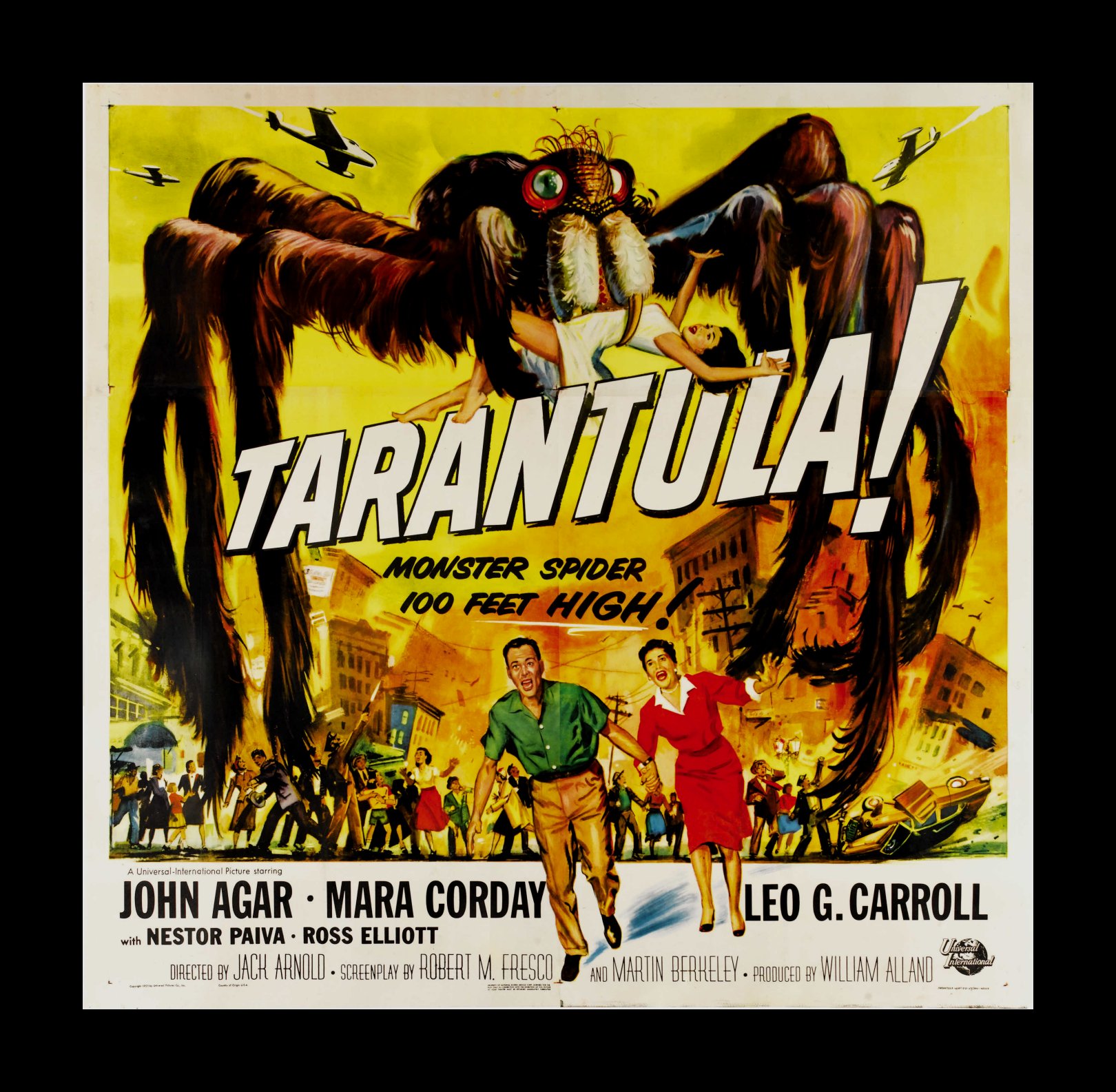This is one of the most fondly remembered of the ‘giant monster’ films popularized by THEM! (1954) and, in hindsight, still ranks among the best of its type. I had first watched it on late-night Italian TV in my early teens and recall being somewhat let down; I was more receptive towards the film on a secondary viewing – since it’s clearly a notch above the other titles in the “Classic Sci-Fi Ultimate Collection” set (save, obviously, for THE INCREDIBLE SHRINKING MAN [1957]).
Anyway, the film echoes THEM! (which is the superior effort, by the way) in several aspects, but is sufficiently different to stand on its own merits. Actually, it’s a logical extension of the earlier film – because even if we have only one mutant monster here (not necessarily a budgetary imposition), it’s an insect species that’s far deadlier than the ants seen in THEM! Besides, even if the resultant growth in size is man-made, it’s the product of an experiment involving a genuine concern for mankind’s future (the creation of synthetic food, which would eliminate the problem of famine facing Earth’s ever-growing population); the fault, then, lies in man’s own impatience at achieving his goal!
An original subtext to the central narrative – and which, as Leslie Halliwell opined, is perhaps even scarier than the idea of an over-sized spider – is the fact that the experiment is eventually conducted on human beings, causing acute acromegaly (shown via amusingly exaggerated make-up)! The cast of TARANTULA may not be as prestigious as that of THEM!, but it’s certainly agreeable: regular Universal hero John Agar (who’s always a doctor of some kind in this type of flick) and his sidekick Nestor Paiva (here in a bigger part than usual as the sheriff); we also get a sexy heroine in Mara Corday (she later did similar duties in two other ‘giant monster’ pictures, namely THE GIANT CLAW [1957] and THE BLACK SCORPION [1957]), and ever-reliable character actor Leo G. Carroll as the misguided – and eventually deformed – scientist.
While the special effects of the rampaging spider seem variable at this juncture (although rather better than I recalled them), they were probably considered state-of-the-art back then. Even so, perhaps the film’s best sequence is the one where the monster attacks the doctor’s house and lab, crushing them under its weight; the image of the giant spider’s eyes peering into Corday’s window is still creepily effective (and must have given 1955 audiences veritable nightmares!). The satisfying climax (featuring a bit by a very young pre-stardom Clint Eastwood) first sees Agar, the authorities and the townsfolk unite in an attempt to deal with the arachnid their own way – but, when this fails, they call a nearby military base for help (whose speedy intervention, an obvious plug to the resourcefulness of the U.S. Air Force, proves infinitely more successful).

